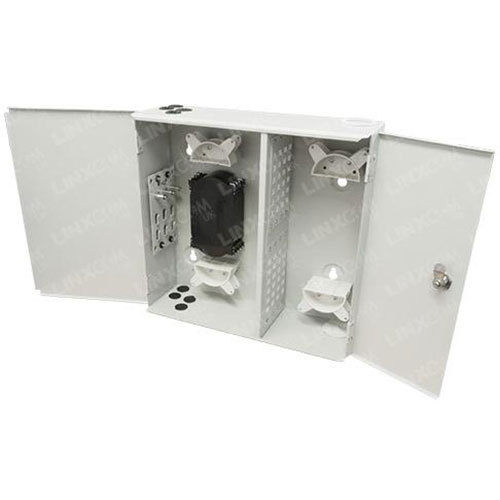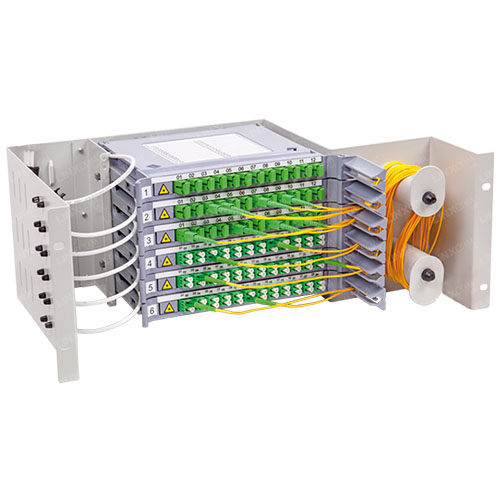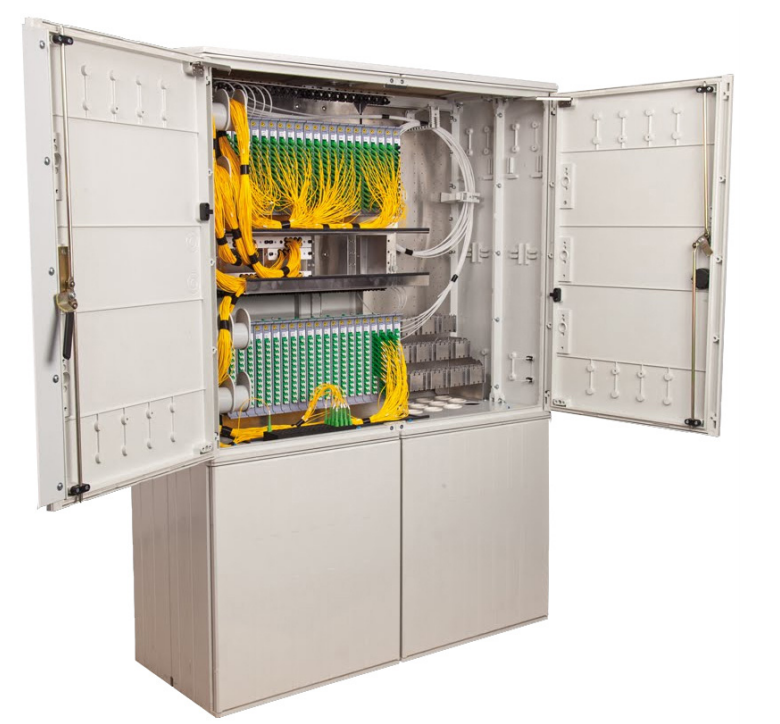With fibre optic installations becoming increasingly more popular, the management of optical transmissions has networks has become more difficult. As discussed in our previous blog, many factors need to be considered for your installation, such as; flexibility, ease of use, futureproofing, management and more. Depending on the type of the installation you’re doing, choosing the correct ODF is key to successful cable management. Due to the versatility and types of configurations ODF can have, we have separated them into Patch Panels, Terminal Boxes and Street Cabinets
WHAT IS AN ODF?
An optical distribution frame (ODF) is used to provide cable interconnections between communication facilities. It allows the integrations of fibre splicing, fibre termination, fibre optic adaptors and connections all within a single unit. It can also house as a protective device to help prevent the damage. In terms of functionally, most of them tend to be the same, however, since ODF can serve multiple purposes they can come in an array of shapes and specifications. Choosing the right ODF solution for your project is not always an easy task. Thankfully, our team is on hand to help with any queries you may have. sales@linx-com.com
TYPES OF ODF
Depending on the structure ODFs can be divided into three types, Wall mount, Floor Mount and Rack Mount.
WALL MOUNT ODF usually uses a design like a small box which can be installed on a wall and suitable for small fibre distribution jobs. Floor mount ODF uses a closed structured. It’s usually designed with a nicer finish and houses fixed fibre capacity.

RACK MOUNT ODF are usually used in modular designs with firm structure. Our rack mount ODF are done to 19” as standard, ensuring they can be installed perfectly on your rack. This unit also provides more flexibility according to the fibre optic cable count and specs, giving you more convenience and providing possibilities for future variations.

ODF CHOICES
ODFs are not limited to the structure however some of the most important things should be considered below.
FIBRE COUNT: depending on the number of fibre connections in places like data centres increasing, the need for high density ODF has become more popular. Due to the rise in High Density (HD) ODFs can come between 24 ports, 48 ports or even up to 144 ports as standard. Furthermore, since they vary from project to project they can always be customised according to your requirements.
MANAGEABILITY: despite the popularity of HD being good however sometimes users report that the management is not easy. Basic requirements of a good ODF should allow easy access of connectors from the front and rear. The colour code of the ODF should remain consistent with the Colour Coded Fibre to prevent any connections from being inserted incorrectly.
PROTECTION: Since ODF can house fibre connections in it including configurations such as splicing joints and connectors to ensure stability and relativity within the transmission of the network. A good ODF should have protection and prevent damage to the fibre by dust or stress.
CONCLUSION
The ODF is one of the most popular and comprehensive pieces of equipment which can help reduce the cost and increase reliability/flexibility of fibre optic network.

